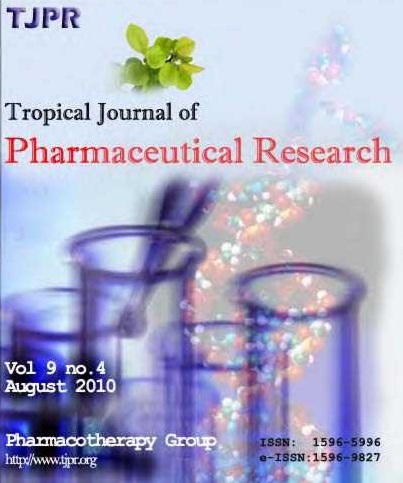MiR-22通过靶向MAPK14抑制血管紧张素ii诱导的小鼠主动脉夹层并保护主动脉壁
IF 0.6
4区 医学
Q4 PHARMACOLOGY & PHARMACY
引用次数: 0
摘要
目的:研究miR-22对血管紧张素ii诱导的小鼠主动脉夹层的影响及其对主动脉壁的保护作用,以及MAPK-14在这一过程中的作用。 方法:采用背侧皮下植入血管紧张素II(1µg/kg/min)微泵建立小鼠主动脉夹层模型。将30只小鼠等数分为5组(n = 6),均通过尾静脉注射。采用定量逆转录聚合酶链反应(qRT-PCR)检测各组小鼠主动脉中miR-22的表达。Western blot法检测MAPK-14蛋白表达,H&E染色法检测主动脉厚径比、胶原和弹性纤维含量。 结果:miR-22过表达组小鼠主动脉组织中miR-22的表达明显高于过表达对照组,而miR-22抑制组小鼠主动脉组织中miR-22的表达明显低于抑制对照组小鼠(p <0.05)。miR-22过表达小鼠主动脉中MAPK-14蛋白表达明显低于过表达对照组,而miR-22抑制小鼠主动脉中MAPK-14蛋白表达明显高于抑制对照组(p <0.05)。在miR-22过表达小鼠中,膜厚度与直径之比高于miR-22抑制小鼠的相应值。miR-22过表达小鼠主动脉弹性纤维和胶原纤维含量显著高于过表达对照组和miR-22抑制组(p <0.05)强生# x0D;结论:过表达miR-22可抑制其靶基因mapk14的表达上调,增加小鼠主动脉介质厚度和主动脉弹性,增加胶原纤维含量,从而对主动脉壁结构起到保护作用。本文章由计算机程序翻译,如有差异,请以英文原文为准。
MiR-22 inhibits angiotensin II-induced aortic dissection and protects aortic vessel wall in mice by targeting MAPK14
Purpose: To study the effect of miR-22 on angiotensin II-induced aortic dissection in mice, and its protective effect on aortic vessel wall, as well the involvement of MAPK-14 in these processes.
Methods: A mouse aortic dissection model was established via subcutaneous implantation of angiotensin II (1 µg/kg/min) micropump in the dorsal region. The mice (n = 30) were assigned in equal numbers to 5 groups (n = 6). All injections were given via the tail vein. The miR-22 expressions in aortas of mice in each group were determined with quantitative reverse transcription-polymerase chain reaction (qRT-PCR). Western blot assay was used to determine the expressions of MAPK-14 protein, while H&E staining was used to measure the ratio of aortic thickness-to-diameter, and contents of collagen and elastic fibers.
Results: The expression of miR-22 in aorta of mice in miR-22 overexpression group was significantly higher than that in overexpression control group, but significantly lower in miR-22 inhibition mouse than in inhibition control mouse (p < 0.05). There was significantly lower protein expression of MAPK-14 in mice aorta in miR-22 overexpression mice than in overexpression control mice, but significantly upregulated in miR-22 inhibition mice, relative to that in inhibition control mice (p < 0.05). In the miR-22 overexpression mice, the ratio of membrane thickness-to-diameter was higher than the corresponding value in miR-22 inhibition mice. There were significantly higher contents of aortic elastic and collagen fibers in miR-22 overexpression mice than in overexpression control and miR-22 inhibition groups (p < 0.05).
Conclusion: Overexpression of miR-22 inhibits the up-regulation of expression of its target gene mapk14, increases thickness of aortic media and aortic elasticity in mice, and increase the content of collagen fibers, thereby exerting protective effect on aortic wall structure.
求助全文
通过发布文献求助,成功后即可免费获取论文全文。
去求助
来源期刊
CiteScore
1.00
自引率
33.30%
发文量
490
审稿时长
4-8 weeks
期刊介绍:
We seek to encourage pharmaceutical and allied research of tropical and international relevance and to foster multidisciplinary research and collaboration among scientists, the pharmaceutical industry and the healthcare professionals.
We publish articles in pharmaceutical sciences and related disciplines (including biotechnology, cell and molecular biology, drug utilization including adverse drug events, medical and other life sciences, and related engineering fields). Although primarily devoted to original research papers, we welcome reviews on current topics of special interest and relevance.

 求助内容:
求助内容: 应助结果提醒方式:
应助结果提醒方式:


